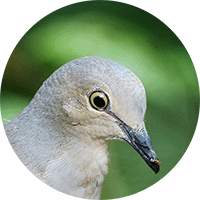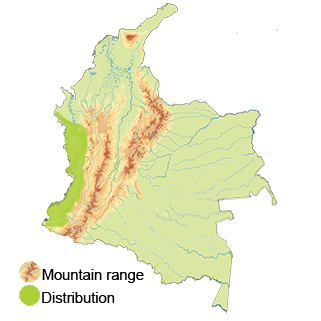Pallid Dove
The Pallid Dove (Leptotila pallida). Read in Spanish
Appearance: The Pallid Dove is a medium-sized dove with a subtle, pale appearance. It has pale gray to brownish-gray plumage with a slightly pinkish hue on its underparts. The wings are darker gray, and the tail is long and tapered. Its eyes are a deep red, and it has a small, dark bill.
Habitat: The Pallid Dove is typically found in lowland tropical forests, both primary and secondary, as well as in disturbed areas with dense vegetation. It prefers habitats with a variety of fruiting trees and shrubs for foraging.
Behavior: Pallid Doves are typically shy and elusive birds that spend much of their time foraging on the forest floor for fallen fruits and seeds. They are known for their quiet and melodious cooing calls that reverberate through the forests. These doves are generally solitary or found in pairs.
Breeding: Pallid Doves in Colombia breed during the rainy season, constructing flimsy nests in trees or shrubs. The female typically lays two white eggs, and both parents participate in incubating the eggs and caring for the young chicks.
Conservation Status: The conservation status of the Pallid Dove in Colombia is not well-documented.
Distribution
The Pallid Dove (Leptotila pallida)
Pacific Region: The Pallid Dove can be found in the Pacific region of Colombia, which includes departments such as Chocó, Valle del Cauca, and Cauca. This region is characterized by humid tropical forests and is known to be a suitable habitat for this species.
Magdalena Valley: The Pallid Dove is also present in the Magdalena Valley region of Colombia, which includes departments like Tolima and Huila. This area consists of various forest types where the Pallid Dove can thrive.
Northern Colombia: In the northern part of Colombia, including departments like Antioquia, Santander, and Norte de Santander, the Pallid Dove is recorded in forested areas and regions with suitable habitat conditions.
Andean Region: Certain areas in the Andean region of Colombia, especially in the eastern Andes, provide suitable habitats for the Pallid Dove. Departments like Boyacá and Cundinamarca may host populations of this species.
Taxonomy
The Pallid Dove (Leptotila pallida)
- Kingdom: Animalia
- Phylum: Chordata
- Class: Aves (Birds)
- Order: Columbiformes
- Family: Columbidae
- Genus: Leptotila
- Species: Leptotila pallida
Vocalization
The Pallid Dove (Leptotila pallida)
- Call: The typical call of the Pallid Dove is a soft, mournful "coo-coo-cooooo" or "coo-coo-coo-coo." The call is gentle, rhythmic, and repetitive, often heard in the early morning or during the evening hours. This cooing call is used for communication between individuals and may serve as a territorial or courtship display.
- Whistle: In addition to its cooing call, the Pallid Dove may also produce a soft, whistling sound that is similar to a gentle whistle or flute-like note. This whistle can be heard intermittently as the bird moves through its habitat or during interactions with other doves.
- Breeding Vocalizations: During the breeding season, the Pallid Dove may intensify its vocalizations, including soft, low-pitched hoots and purring sounds that are part of courtship rituals. These vocalizations help strengthen pair bonds and establish territories for nesting.
- Communication: Pallid Doves use vocalizations not only for courtship and territorial purposes but also for general communication within their social groups. These calls help them stay in contact with each other in the dense vegetation of their forest habitats.




